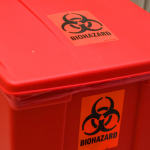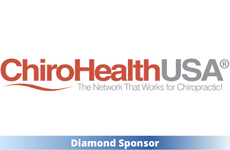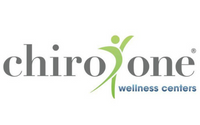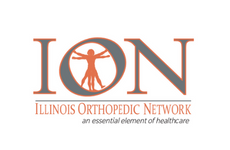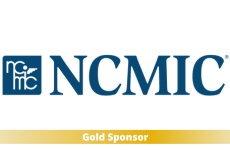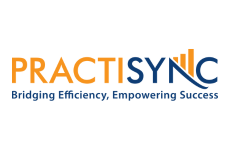
Uncovering Nutritional Triggers in Chronic Headache Patients: A Clinical Perspective

Headaches remain one of the most frequently reported symptoms among chiropractic patients, with many individuals presenting with acute or chronic headache conditions. While physical and structural assessments are foundational to chiropractic care, overlooking the nutritional component may leave significant diagnostic and therapeutic opportunities untapped. This article explores the critical role of nutrition in headache management, including common nutrient deficiencies, food-related triggers, and the biochemical mechanisms at play.
Dietary Chemicals and Elimination as Diagnostic Tools
The simplicity of nutritional triggers can often be surprising. A compelling case from clinical experience involved a woman in her early 20s suffering from daily, debilitating headaches. Her pain severity was consistently rated as 10 out of 10, significantly impairing her quality of life. Upon reviewing her dietary habits, it was revealed that she consumed a full case of Diet Coke daily. The aspartame content, a known headache trigger, was suspected to be a key contributor. After eliminating Diet Coke from her routine for two weeks, her headaches completely resolved, underscoring how a single dietary chemical can be the root cause.
Clinicians should also consider the potential for transient “detox” symptoms when eliminating habitual substances. Similar to caffeine withdrawal, patients may initially experience a worsening of symptoms, including headaches, before improvement occurs. Recognizing this pattern can help set accurate expectations and maintain patient adherence during elimination trials.
Nutrient Deficiencies: Clinical Testing and Supplementation
When dietary triggers are not apparent or elimination trials are inconclusive, micronutrient evaluation becomes crucial. Nutrient testing can include serum, white blood cell, and red blood cell assays to distinguish between acute and chronic deficiencies. This approach provides insight into a patient’s recent and long-term nutritional status.
Magnesium is one of the most commonly associated minerals in headache etiology. Red blood cell magnesium levels offer a useful assessment, as intracellular values are more clinically relevant. Where a deficiency is revealed, treatment may range from 150 mg to as much as 1,200 mg daily, depending on severity and response. Formulation matters: magnesium oxide, magnesium threonate, and magnesium glycinate are preferred over magnesium citrate, which can induce diarrhea and provides minimal therapeutic benefit.
Another vital nutrient is riboflavin (B2), often overlooked despite its clinical importance. Supplementation between 400 and 800 mg can yield significant results in deficient patients. Other B vitamins, including B6, folate, and B12, are also implicated, especially in patients presenting with fatigue or anemia. These vitamins play essential roles in DNA methylation and homocysteine regulation, both of which are linked to headache pathology.
Fatty Acids, Antioxidants, and Hormonal Considerations
The balance of omega-3 and omega-6 fatty acids is another critical consideration. Many patients exhibit a high omega-6 to omega-3 ratio due to dietary patterns rich in arachidonic and linoleic acid. Supplementation with EPA, DHA, and gamma-linoleic acid can help rebalance this ratio and potentially reduce headache frequency and intensity. Dosing varies but can range from several hundred to over 3,000 mg daily.
Vitamin D deficiency is prevalent and has also been linked to headache symptoms. Clinically, levels below 30 ng/mL are considered deficient, with optimal therapeutic ranges between 60 and 80 ng/mL. Dosage may vary from 2,000 IU to 10,000 IU daily, depending on current levels. Importantly, both vitamin D and omega-3s are fat-soluble and are best absorbed with a high-fat meal. This assumes functional digestive capacity, and in some cases, gastrointestinal assessment may be necessary.
Coenzyme Q10 is another nutrient with therapeutic potential, especially for patients on statin medications, which can deplete CoQ10 levels. Headaches in these patients may be relieved with doses ranging from 100 to 400 mg.
Hydration and Food Sensitivities
Water intake is a frequently overlooked variable in headache etiology. Although traditional advice suggests half the body weight in ounces daily, the scientific literature lacks consensus. Clinical indicators of hydration include anion gap, kidney markers, and urine color. Pale yellow to clear urine after the first morning void indicates adequate hydration. Water must be consumed as water; coffee, tea, and chemical-laden drinks do not substitute.
Food sensitivities, particularly IgG- and IgA-mediated responses, are another avenue to explore. Testing can identify personalized triggers contributing to inflammatory responses, of which headaches are a common symptom. For patients hesitant to pursue testing, clinicians may trial elimination of common triggers such as chocolate, dairy, tomatoes, and processed meats containing nitrites and MSG. Artificial sweeteners, tyramine, phenols, and alcohol are additional suspects.
Dietary Protocols and Genetic Considerations
Various diets, including ketogenic, Atkins, Mediterranean, and DASH, have shown promise in headache management. Six- to eight-week dietary trials can help determine individual responsiveness. Additionally, emerging research in epigenetic nutrition indicates that genetic variants can influence headache susceptibility and response to dietary components. For example, variations in caffeine metabolism genes can affect whether caffeine triggers or alleviates headaches in specific individuals.
Conclusion
Headaches are complex and multifactorial, yet nutrition often provides a powerful key to unlocking symptom resolution. From chemical exposures and hydration to micronutrient deficiencies and food sensitivities, the nutritional landscape offers rich diagnostic and therapeutic opportunities. While structural and hormonal factors remain critical, incorporating nutritional evaluations into chiropractic practice can lead to meaningful and sometimes dramatic clinical outcomes for headache patients.




